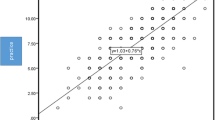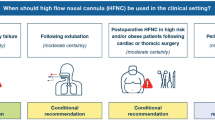Abstract
Although hyperbaric oxygen therapy has been used for diabetic foot ulcer since the 1980s, there is little information on its efficacy. The aim of this study is to evaluate whether hyperbaric oxygen can decrease major amputation rates and to determine the predictive factors. A total of 184 consecutive patients were treated with hyperbaric oxygen therapy as an adjunct to standard treatment modalities for their diabetic foot ulcer. Of these patients, 115 were completely healed, 31 showed no improvement and 38 underwent amputation. Of the amputations, nine (4.9%) were major amputations (below knee) and 29 were minor. Major amputations were associated with the Wagner grade (p < 0.0001), with the age of the patients (p = 0.028) and with the age of the wounds (p = 0.018). Hyperbaric oxygen therapy can help to reduce the major amputation rates in diabetic foot ulcer. However, further large, multicentre, randomised controlled studies are needed to make more accurate conclusions.
Résumé
Dès 1980, le traitement par oxygène hyperbare a été utilisé pour les lésions des pieds diabétiques avec ulcérations. Les données de la litterature sur l’efficacité de ce traitement semble limitées. Le but de cette étude est d’évaluer si l’utilisation de l’oxygène hyperbare peut diminuer le taux d’amputation et permettre de faire une prédiction concernant l’évolution. Matériel et méthode: 184 patients consécutifs ont été traités par oxygène hyperbare pour leurs lésions sur pieds diabétiques. 115 cas ont complètement guéris, 31 cas n’ont pas du tout été améliorés, 38 ont été amputés. Sur ces amputations 9 (4,9%) ont été des amputations majeures (sous le genou) et 29 mineures. Les amputations majeures sont associées au grade de Wagner (p < 0,0001) à l’âge des patients (p = 0,028) et la durée d’évolution des lésions. Conclusions: l’oxygène hyperbar peut permettre de réduire le taux d’amputations majeures dans les pieds diabétiques avec ulcères. Cependant une étude plus large, multicentrique, randomisée est nécessaire pour conclure de façon plus stricte.



Similar content being viewed by others
References
Abidia A, Laden G, Kuhan G, Johnson BF, Wilkinson AR, Renwick PM et al (2003) The role of hyperbaric oxygen therapy in ischaemic diabetic lower extremity ulcers: a double-blind randomised-controlled trial. Eur J Vasc Endovasc Surg 25:513–518
Al-Waili NS, Butler GJ, Beale J, Abdullah MS, Finkelstein M, Merrow M et al (2006) Influences of hyperbaric oxygen on blood pressure, heart rate and blood glucose levels in patients with diabetes mellitus and hypertension. Arch Med Res 37:991–997
Barnes RC (2006) Point: hyperbaric oxygen is beneficial for diabetic foot wounds. Clin Infect Dis 43:188–192
Berendt AR (2006) Counterpoint: hyperbaric oxygen for diabetic foot wounds is not effective. Clin Infect Dis 43:193–198
Chen SJ, Yu CT, Cheng YL, Yu SY, Lo HC (2007) Effects of hyperbaric oxygen therapy on circulating interleukin-8, nitric oxide, and insulin-like growth factors in patients with type 2 diabetes mellitus. Clin Biochem 40:30–36
Doctor N, Pandya S, Supe A (1992) Hyperbaric oxygen therapy in diabetic foot. J Postgrad Med 38:112–114
Faglia E, Fevales F, Aldeghi A, Calia P, Quarantiello A, Barbano P et al (1998) Change in major amputation rate in a center dedicated to diabetic foot care during the 1980s: prognostic determinants for major amputation. J Diabetes Complications 12:96–102
Faglia E, Fevales F, Aldeghi A, Calia P, Quarantiello A, Oriani G (1996) Adjunctive systemic hyperbaric oxygen therapy in treatment of severe prevalently ischemic diabetic foot ulcer. A randomized study. Diabetes Care 19(12):1338–1343
Fife CE, Buyukcakir C, Otto G, Sheffield P, Love T, Warriner R III (2007) Factors influencing the outcome of lower-extremity diabetic ulcers treated with hyperbaric oxygen therapy. Wound Repair Regen 15:322–331
Gill AL, Bell CNA (2004) Hyperbaric oxygen: its uses, mechanisms of action and outcomes. Q J Med 97:385–395
Kalani M, Jörneskog G, Naderi N, Lind F, Brismar K (2002) Hyperbaric oxygen (HBO) therapy in treatment of diabetic foot ulcers. Long term follow-up. J Diabetes Complications 16:153–158
Kessler L, Bilbault P, Ortega F, Grasco C, Passemard R, Stephan D et al (2003) Hyperbaric oxygenation accelerates the healing rate of nonischemic chronic diabetic foot ulcers: a prospective randomized study. Diabetes Care 26:2378–2382
Lin TF, Chen SF, Niu KC (2001) The vascular effects of hyperbaric oxygen therapy in treatment of early diabetic foot. Undersea Hyperb Med 28:63
Lipsky BA, Berendt AR, Deery HG, Embil JM, Joseph WS, Karchmer AW (2004) Diagnosis and treatment of diabetic foot infections. Clin Infect Dis 39:885–910
Roeckl-Wiedmann I, Bennett M, Kranke P (2005) Systematic review of hyperbaric oxygen in the management of chronic wounds. Br J Surg 92:24–32
Steed DL, Attinger C, Colaizzi T, Crossland M, Franz M, Harkless L (2006) Guidelines for the treatment of diabetic ulcers. Wound Repair Regen 14:680–692
van Putten M (1999) Consensus conference on hyperbaric oxygen in the treatment of foot lesions in diabetic patients. Foot 9:53–55
Wagner FW (1981) The dysvascular foot: a system for diagnosis and treatment. Foot Ankle 2:64–122
Zgonis T, Garbalosa JC, Burns P, Vidt L, Lowery C (2005) A retrospective study of patients with diabetes mellitus after partial foot amputation and hyperbaric oxygen treatment. J Foot Ankle Surg 44(4):276–280
Acknowledgements
All authors of this study confirm that they have no financial and personal relationships with other people or organisations that could inappropriately influence their work. We thank Dr. Timur Kose for statistical analysis.
Author information
Authors and Affiliations
Corresponding author
Rights and permissions
About this article
Cite this article
Kaya, A., Aydin, F., Altay, T. et al. Can major amputation rates be decreased in diabetic foot ulcers with hyperbaric oxygen therapy?. International Orthopaedics (SICOT) 33, 441–446 (2009). https://doi.org/10.1007/s00264-008-0623-y
Received:
Revised:
Accepted:
Published:
Issue Date:
DOI: https://doi.org/10.1007/s00264-008-0623-y




